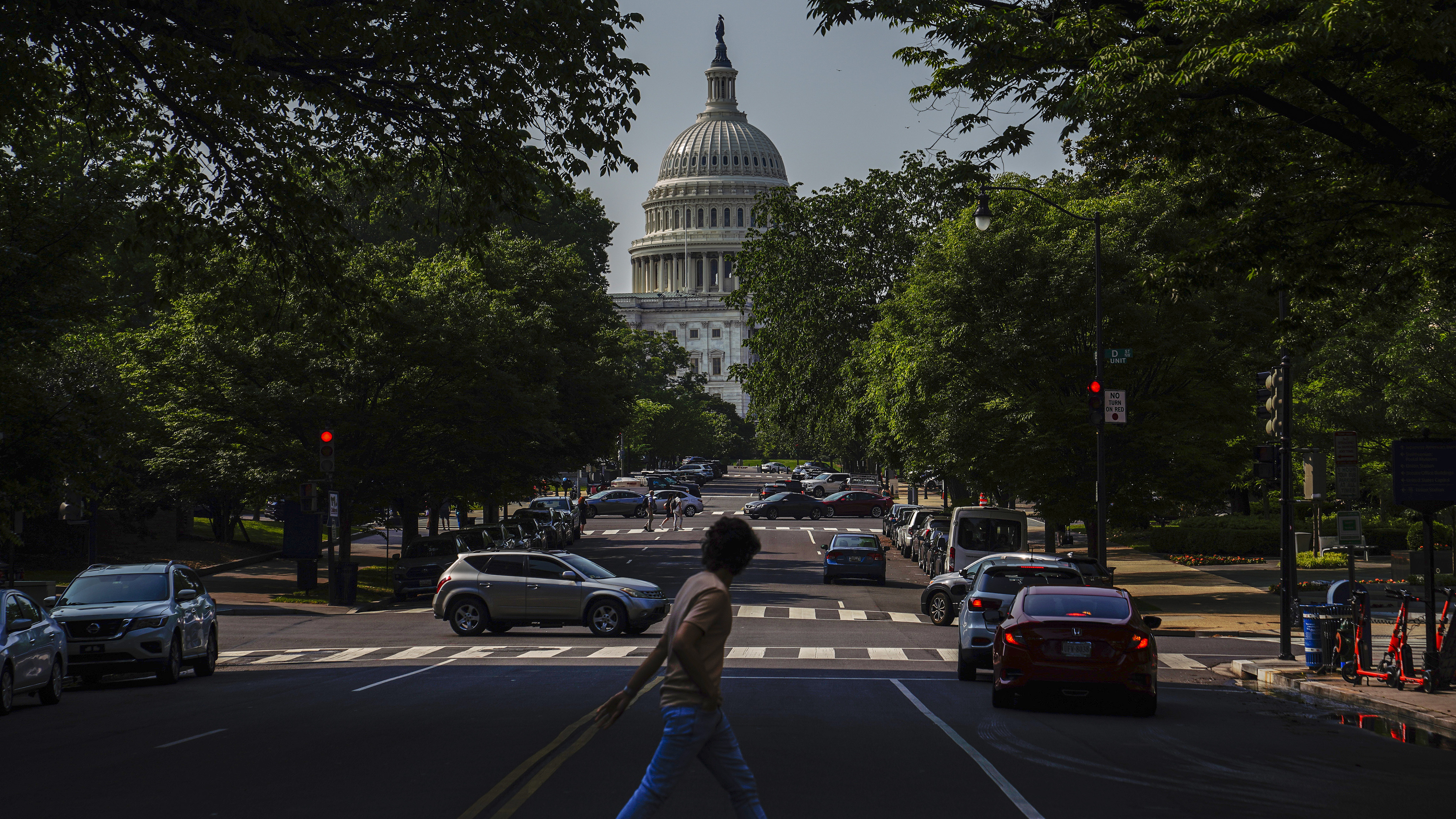
The U.S. Capitol in Washington, D.C., May 22, 2023. /CFP
The U.S. Capitol in Washington, D.C., May 22, 2023. /CFP
After a marathon set of talks over the past weeks, the Democrats and Republicans reached a tentative debt limit deal on May 28 to avert a fast-approaching default in early June.
Non-defense government spending would be capped at the current level for two years and then rise by one percent in 2025, according to the proposed deal. Unused COVID-19 relief funds will be incorporated into the agreement, and certain age changes are proposed for a government nutrition assistance program that provides food-purchasing assistance for low-income earners.
The proposed deal still needs to be approved by Congress, which controls how much money the United States can borrow. The country borrows money to fund the government because it spends more than it raises in taxes.
Diao Daming, a research fellow at the National Academy of Development and Strategy at Renmin University of China, told China Media Group (CMG) that the proposed deal might face strong opposition within both parties, adding that the scale of the spending cuts falls short of what Republicans hoped for and that the cuts in social welfare spending upset the liberal wing of the Democratic Party.
"Even if the deal is passed, it means no end to political conflicts between the two parties," said Diao. "The debt ceiling issue shows not only the deepening division between the two parties but also conflicts within their own parties."
Uncertain passage
A vote on the deal scheduled for Wednesday will see whether the compromise between the two parties will work. Concerns about the deal's details, such as student loan relief and defense spending, still exist.
As a sharp critic of the debt limit deal, Congressman Ralph Norman said on Twitter that a $4-trillion debt ceiling increase with virtually no cuts is unacceptable, and he will not vote for it.
The two major U.S. political parties view the national debt differently. The Democrats see raising the debt limit when necessary as a means to maintain the operation of the government. However, the Republicans see the rising national debt as evidence of an out-of-control government.
While Democratic leaders call for the limit to be raised, Republicans want to limit federal spending, particularly spending on Democratic priorities. Debt-limit brinkmanship has become a strategy for the Republicans, who want to extract policy concessions from the Democratic president. Congress raised the limit three times without major debate when Donald Trump, a Republican, was in the White House. The debate reemerged when Joe Biden became president.
The two parties are trying to gain the upper hand on the negotiating table, as neither wants to be blamed for the approaching debt default, especially the Democrats who are currently in power.
The crisis lingers
U.S. debt has risen in the past decades, regardless of administration, with the cap currently at about $31.4 trillion. The limit was breached in January, but the treasury department helped the government through the situation by using "extraordinary measures." The debt ceiling has been modified 102 times since World War II, according to the U.S. Congressional Research Service.
Zhang Monan, deputy director of the Institute of American and European Studies at the China Center for International Economic Exchanges, told CMG that the U.S. continues to increase its debt ceiling, creating an institutional defect that allows its government to spend beyond its means and snowball its national debt.
She said the U.S. has been overdrawing the credit of the dollar and the government, putting both the U.S. and global financial markets at risk.
"Countries across the world are exposed to spillover effects from the U.S. debt default. Many countries are looking for ways to avoid the risk by accelerating the process of de-dollarization," Zhang said.
The credit rating agency Fitch Ratings has recently placed the U.S. AAA-rated long-term foreign-currency issuer default rating (IDR) on a "negative watch" as the debt ceiling deadlock continues.
Experts from Africa and Latin America say developing countries will be the ultimate victims of a U.S. debt default. As the U.S. dollar is the world's reserve currency, it is suggested that other countries put de-dollarization on their agenda to avoid global panic caused by a potential default.